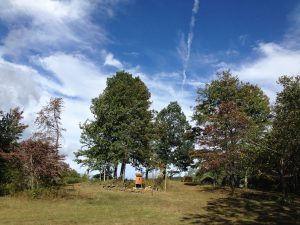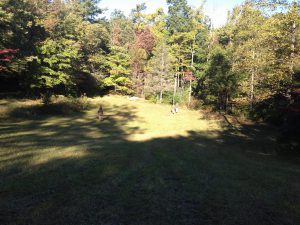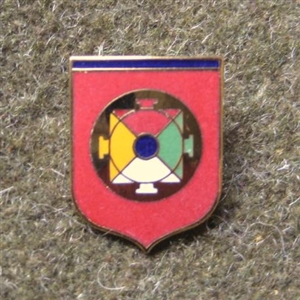Tuesday
Featured StoriesDrala Encampment, Wind and Fire
We continue following the adventures of Drala Regional Encampment, in part two of a multi-part series on this event
by Harrison Holmes
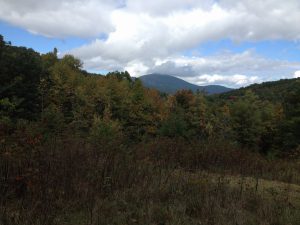 On day three, rain is replaced by wind.
On day three, rain is replaced by wind.
Setting about our activities, we dig holes, chop wood, repair tents, and arrange the shrine room. Throughout, we never work at or build character through exhaustion–well at least not physical exhaustion–but we are always working, and so required always to be attentive and at the ready. In the brief breaks between sessions we get to know one another and grow together. Yet as an officer walks by or some movement of the group is caught on the periphery of one’s gaze, conversations are left dangling like receivers on the end of their cords in anticipation of the next call to awake. Caught in this space between relaxation and alertness we are continually animated by the wind of wakefulness, flowing and riding joyously out towards wherever is to be accomplished.
“Yes? How can I be of help?”
Completing the mandala of the encampment, we erect the flagpoles and raise the banners. We declare for all to see that we have arrived. We signal to the bandits of hope and fear that we will be vigilant, precise, and dutiful in watching our own minds. After that we perform a lhasang, consecrating the land with the smoke of juniper.
The dralas are pleased. Crows chatter, coyotes howl when hearing the call to AWAKE, owls usher in silence and appreciation, and the warrior’s cry resounds. Everything echoes and resonates as it is carried upon the wind, rustling the leaves of the surrounding woods.
Magic happens in silence and the wind of inspiration flows through the gaps.
In that space of relaxation after the day’s work is done, the mandala of the Dorje Dradul, with its little details, begins to shine through.
Assembling for dinner in the shrine room I receive a makeshift tiger skin seat, a yellow and black plastic bag on which to sit. I sit and listen to the chant, “Lord of the Feast.” Though I don’t know all the words yet, I listen and rejoice as I look out at everyone, we vajra warriors assembled here at Drala point for this very dignified ganachakra. Raising our bowls we summon down the blessings of Gesar of Ling and all the deities of the lineage. We sit gathered around the trident-topped shrine and the clear single stroke of the black ashe, images of the Dorje Dradul and the Makkyi Rabjam Jampal Dradul beaming proudly on either side.
That night bagpipes fill the air at Drala point with the notes of “Amazing Grace,” signaling lights out.
Fire
On day four we get our first taste of the heat of battle. With it the sky begins to clear and the sun to shine. The calm before the storm.
That morning as we stand out on the parade ground the Sergeant Major, acting as drill sergeant, articulates his role as cutting through our subconscious gossip. By holding us to the precision of the outer forms, the sharpness of dress, salutes, marches, and songs, drill leaders summon up the powers of clarity and attention. The result in the practice of drill is honesty, trust, and simplicity. It is our job from our side to rest in this simplicity, to rest in the spaciousness of the formation through which clear communication can resound. But of course there is always movement, friction, energy, and heat.
Splitting into squads A and B, we play outwardly with strategy and formation before launching into the game of Kagemusha. Inwardly we explore our proficiency and hesitancy in wielding the sharp sword of speech, as we change roles and are given a chance to examine our ability to both give and receive commands. Personally I find that I am hesitant to take on the role of command, more comfortable with offering observations and strategic advice.
Dapon Ryken reminds us throughout the day of the battle to come. Stirring the cauldron again and again, he allows our minds to boil over with the question of what is coming next: Skirmish. What will we have to face? What will happen? We begin to strategize and anticipate. And then we simply cut our minds and leave the question hanging where it is. But for now we are told only that we will be using little flour bags, which we prepare now for our game of Kagemusha.
After much confusion over what element does what, and which counters which–a discussion much like a longwinded debate over the precise rules of rock paper scissors—we assign ourselves to one of the elements: earth, water, or fire. Each element offers the opportunity to manifest and experiment with various strategic modes, in both action and speech.
 Water is fluidity and speed, adapting quickly to changes and moving with great agility across the field, having to tag its target by hand. Earth is patience and resilience; with the power to become invulnerable when holding a knee to the ground, they progress carefully but unwaveringly toward their target. Fire flickers and sparks with great energy, but sometimes burns itself out. One of us, taking on the character of fire, quickly sprints up to the opposing squad and haphazardly makes several throws. He wastes all his ammunition–not a single flour sack hits its mark. Still the character of fire can act like a sentry, with a torch and a flour sack for a bow and arrow, making it difficult to approach.
Water is fluidity and speed, adapting quickly to changes and moving with great agility across the field, having to tag its target by hand. Earth is patience and resilience; with the power to become invulnerable when holding a knee to the ground, they progress carefully but unwaveringly toward their target. Fire flickers and sparks with great energy, but sometimes burns itself out. One of us, taking on the character of fire, quickly sprints up to the opposing squad and haphazardly makes several throws. He wastes all his ammunition–not a single flour sack hits its mark. Still the character of fire can act like a sentry, with a torch and a flour sack for a bow and arrow, making it difficult to approach.
At every turn the enemy adapts and evolves, learning from the tactics of the previous match, trying out new strategies and new elemental configurations. Yet in truth there are no enemies. We communicate through the force of gesture and after each volley we adapt, having observed what the other side has learned from us. So, each working from our own side in this game of call and response, we evolve together.
While we go about our game, bandits begin to appear out in the distance. In moments of frustration or hesitation, in the subtle heat caused by the friction of voices and ideas, we are given a glimpse into the nature of these poisons: the frustration of anger, the righteousness of passion and the rejection and refusal of ignorance. We experience just a taste of their intensity and their dangers as they arise within us and flow outwards toward our squad mates.
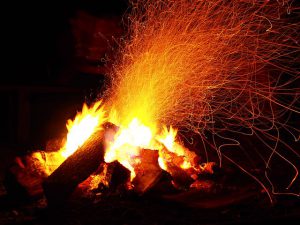 That night we gather in the shrine room as Miss Forsythe addresses us on the nature of the Desung path. This night’s campfire is especially lively, kicking up masses of sparks everywhere. Camp Engineer Mr. Swain attempts to kneel next to the seat of Miss Forsythe, to shield her from the fire with his own body. Eventually this is abandoned, along with any other attempt to rearrange or otherwise fuss with the burning mass. We are told that the task of the Desung is to hold the energy of the container, the formation and ourselves, and to learn how to work with that energy from within. So we simply let it rest as it is, and allow for gaps as needed.
That night we gather in the shrine room as Miss Forsythe addresses us on the nature of the Desung path. This night’s campfire is especially lively, kicking up masses of sparks everywhere. Camp Engineer Mr. Swain attempts to kneel next to the seat of Miss Forsythe, to shield her from the fire with his own body. Eventually this is abandoned, along with any other attempt to rearrange or otherwise fuss with the burning mass. We are told that the task of the Desung is to hold the energy of the container, the formation and ourselves, and to learn how to work with that energy from within. So we simply let it rest as it is, and allow for gaps as needed.
At some point Dapon Ryken interjects to say that the work of this particular arm of service is not its alone, and that ideally the goal of all Kasung practice is to become Desung. Enquiring further, I later learn that the Desung arm, like Athena from the head of Zeus, sprung into being quite simply because the Dorje Dradul looked at someone and uttered the words: “We need to take care of one another!”
But how, Rinpoche, and to what effect?
Miss Forsythe guides us in meditation and asks us to open our mind to sensation, the solidness of the benches beneath us, the wind swirling around us, the cold at our backs, and the heart of the fire snapping at our uniforms. Closing our eyes and turning inward, we are asked to bring into awareness all those feelings which we might in the normal course of things simply take as given, and so ignore. Thus aware, we can then begin to sense our own feelings as they too arise and pass through our field of experience. As each emotion passes through us, our perceptions are colored red, yellow, green, white, and blue, like the mandala crest of the Desung shield pin. If we can see the character and color of each sensation clearly, and work skillfully with whatever arises from our own minds, then we can begin to extend this same skillfulness beyond self, to other. To do this, we must first learn to be compassionate and honest with ourselves.
To what effect? “To help others bring their obstacles into awareness and onto the path,” says Miss Forsythe.
Regional encampment offers plenty of opportunities for all of us to practice examining our own minds and emotions. This is particularly so for myself and Kasung Palinisami who have been asked to act as squad Desung. We have absolutely no idea what we’re doing, and so each day offers new lessons in how to untangle the lines and let genuine communication flow through. It appears that what is needed of Desung, as demonstrated by Miss Forsythe, is softness, patience, curiosity, resilience, and a gentle sense of fearlessness when dealing with others. What is needed is the willingness to walk into the heat of emotions, of oneself and others, and there to practice one’s equanimity.
A shower of sparks washes over Miss Forsythe, and with what looks like a small and gentle sigh, she remains in her seat. As I watch with great admiration, a single ember lands on the back of my own hand, causing me to jump in my seat and jerk my arm away.

